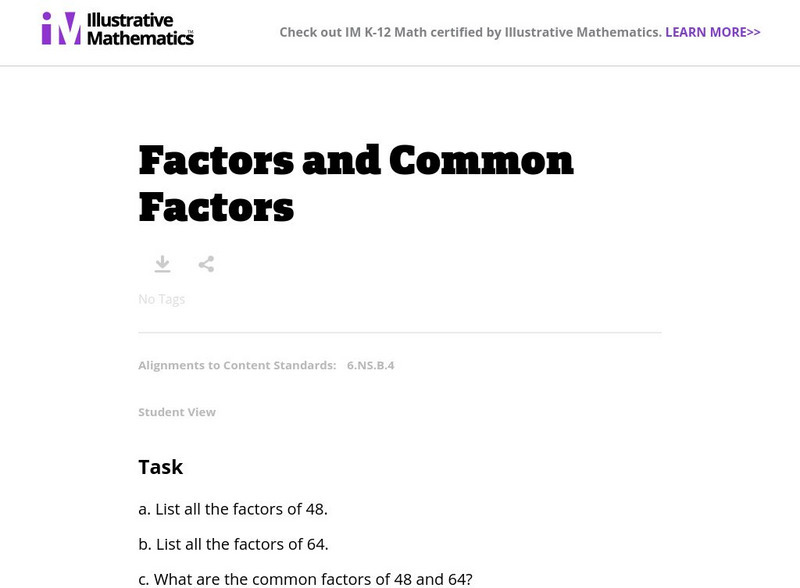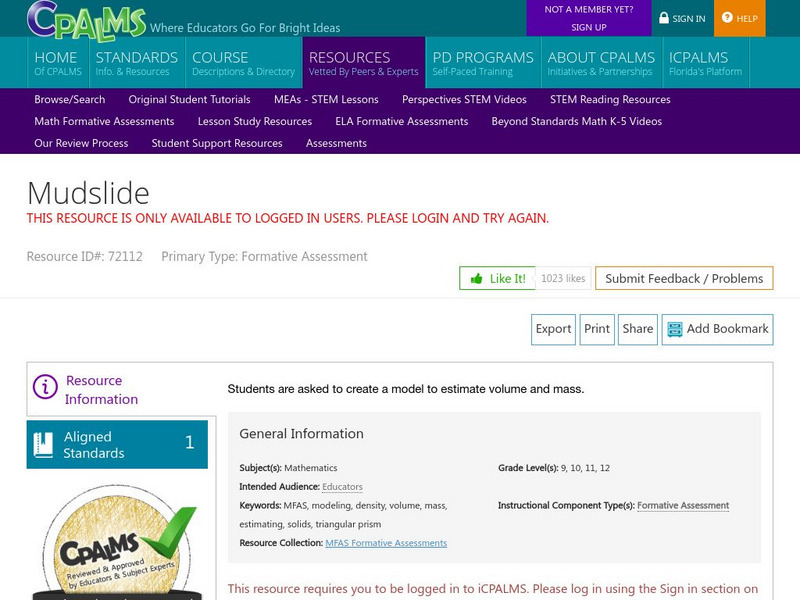Illustrative Mathematics
Illustrative Mathematics: Which Weighs More? Which Weighs Less?
Students will use a block to compare with other objects to decide which is heavier/lighter. They will fill in a chart by drawing a picture of it under "Heavier" or "Lighter" depending which applies.
Illustrative Mathematics
Illustrative Mathematics: 6.ns Factors and Common Factors
This task asks students to apply the concepts of factors, common factors, and the greatest common factor in an abstract context. Aligns with 6.NS.B.4.
John F. Kennedy Center
The Kennedy Center: Balancing Mobiles
In this lesson plan, students will apply mathematical, science, and engineering concepts to experiment with balancing levers. They will learn to classify types of levers to design and build a simplified mobile. Students will explore...
University of Oregon
Basics of Exponential Growth
A site for exponential growth as it applies to population, resource consumption, polution.
CPALMS
Cpalms: Mudslide
[Free Registration/Login Required] This is a formative assessment task where learners are asked to first make a mathematical model of a mudslide given the dimensions of the area it covers. They then use an estimate of density to...
Alabama Learning Exchange
Alex: Quilting With My Pal, Pythagoras!
In this unit lesson, students will learn about the Pythagorean Theorem and how it is evident in our everyday world. Students will apply the concept of the Pythagorean Theorem to the squares of a quilt. Each quilt square will be designed...
Alabama Learning Exchange
Alex: Similar Figure Activity
The purpose of this lesson is to allow middle schoolers to self-discover the relationships between similar figures. The students should then take what they learn about these relationships and apply these concepts to problem-solving.
Other
Ncsc Gseg: Instructional Resource Guide
Looking for best practice instruction for students with cognitive disabilities? This site has an Instructional Resource Guide that provides instructional strategies and evidence-based prompting.







